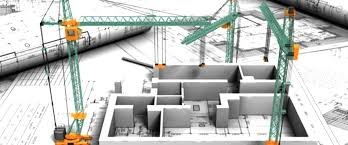introducing my course part III
.jpg)
Hello steemians, am Olanipekun Adebola Segun and I will be introducing my course Quantity surveying, Service provided by a Quantity surveyor and the Roles of a Quantity surveyor, and I will also introduce what tendering and estimating Is all about and how it plays its role in the field. Thanks
A quantity surveyor is a professional who manages all costs relating to building and civil engineering projects, from the initial calculations to the final figures, which includes maintaining of the building after some period of years. They work towards minimizing the costs of a project and enhance value for money, while still achieving the required standards and quality of the building.
A quantity surveyor could work for either the client or the contractor, in an office or on site. A Qs is involved in a project from the start, he prepares estimates and costs of the work. When the project is in progress, he also keeps track of any variations to the contract that may affect costs and create reports to show profitability. A Quantity Surveyor is not to be confused with Land Surveyors or Land Survey Engineers.
Services provided by Qs
• His in charge of the cost planning and commercial management throughout the entire life cycle of the project from inception to post-completion
• Value determination
• Cost consulting, cost estimating
• Cost management process
• Asset capitalization
• assist in establishing a client's requirements
• Interim valuations and payment assessment
• He prepares the PQQ documentation
• Assessing the additional costs of design variations
Responsibilities of Qs
To successfully carry out your role, you'll need to:
• A Qs prepares tender and contract documents, including bills of quantities with the architect and/or the client;
• He advise on a procurement strategy;
• He allocate work to subcontractors;
• maintain awareness of the different building contracts in current use;
• provide advice on contractual claims;
• enable clients to initiate construction projects;
• assist clients in locating and accessing additional and alternative sources of funding;
• he offer advice on property taxation;
• he perform risk, value management and cost control;
• understand the implications of health and safety regulations.
• He value completed work and arrange payments.
What is Tendering?
Tendering can be define as the process by which bids are invited from interested contractors to take part in some specific packages of construction works. All bidders will be treated equally, with fairness, clarity, accountability and simplicity.
When organizations or an individual wants to have a new facility, or carry out refurbishment, reformation or maintenance of an existing facility, they will be involved in some form of procurement.
What is procurement?
Can be define as the process of finding, agreeing to terms an acquiring goods and services or works from an external source through the means of tendering or competitive bidding process.
This process is to ensure that the buyer receive the goods, services or works at the best time, price, quality and quantity when location are compared.
Types of procurement method
• Direct procurement: - this deals with the raw materials and production of goods.
• Indirect procurement: - this deals with maintenance, repair and operating supplies.
There are two most commonly used methods of tendering which are
• Single-stage selective tendering
• Two-stage selective tendering.
These methods involve the invitation of tenders from firms on a pre-approved list, chosen because they meet the certain minimum standards in such as financial standing, experience, availability, capability and competence. The difference between this two is that in the two-stage process, the contractor becomes more committed in the planning of the project at an earlier stage and in the second stage the employer's team will develop the exact specification in conjunction with the preferred tenderer. The principle of tendering is to ensure that true competition is achieved.
Procedures of Tendering?
There are different procedures of tendering which is commonly used by bidders are
• Open tendering
• Selective tendering
• Negotiable tendering
• Framework tendering
• Serial tendering
Open tendering:-this is an open transaction that allows anyone who is ready to submit tender to supply goods or services that are required. An advert will be placed to all giving everyone notice that the contract is being tendered, offering an equal opportunity to any organization or individual to submit a tender.
Selective tendering: - this only allows suppliers to submit tenders by invitation. A pre-selected list of possible suppliers that are suitable and capable for the project is selected. This procedure keeps the clients mind assured that his requirements will be satisfied and will reduce and will reduce effort that can be involved in open tendering.
Negotiable tendering: - this involves negotiating with a single supplier that is appropriate for highly specialized in the contracts.
for further reading
https://www.designingbuildings.co.uk/wiki/Tender_processes_for_construction_contracts
https://steemit.com/steem/@shunguystin/introducing-my-course-part-ii
https://steemit.com/life/@shunguystin/quantity-surveyor
[image source](bpmgroupuk.com, keystonepg.ie,smeclabbs.com)
THANKS FOR TAKING YOUR TIME TO GO THROUGH MY WORK I REALLY APPRECIATE .
I remain your humble and loyal boy @shunguystin
.jpg)
.jpg)
